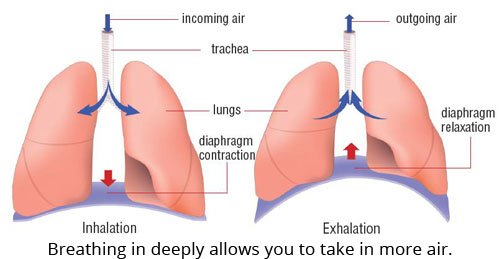The Breathing Process
Breathing is the process of getting oxygen-containing air into the body and expelling carbon dioxide-containing air out of the body.
When you inhale, the diaphragm, or the strong bow-shaped sheet of muscle between the chest and the abdomen, stretches down. The chest muscles, on the other hand, raise the ribs and breastbone. This inhalation process increases the size of the chest cavity and expands the elastic lungs. Because the air outside the body has greater pressure than the air inside the body, air is forced in through the nose down to the lungs. When you exhale, the diaphragm moves up again and the ribs drop to their normal position. The pressure applied to the lungs forces some of the air out, passing the tubes then out through the nose.
The breathing cycle called respiration is the process of inhaling and exhaling air. Parts of the circulatory system, or the body system responsible for blood circulation, help in the process.
Blood flows in the lungs through capillaries. The red blood cells, or the solid component of the blood, pick up the oxygen from the lungs. Oxidation then takes place in the cells, causing the blood to become bright red. In this process, oxygen is used to “burn” the nutrients delivered by the blood to the cells. The process results in the production of the energy needed by the cells and the release of carbon dioxide, the waste product. The red blood cells absorb carbon dioxide. The blood becomes dark red and then goes back to the lungs. The air that contains carbon dioxide is forced out of the lungs, and fresh air that contains oxygen is forced into the lungs. This respiration process goes on continuously.

